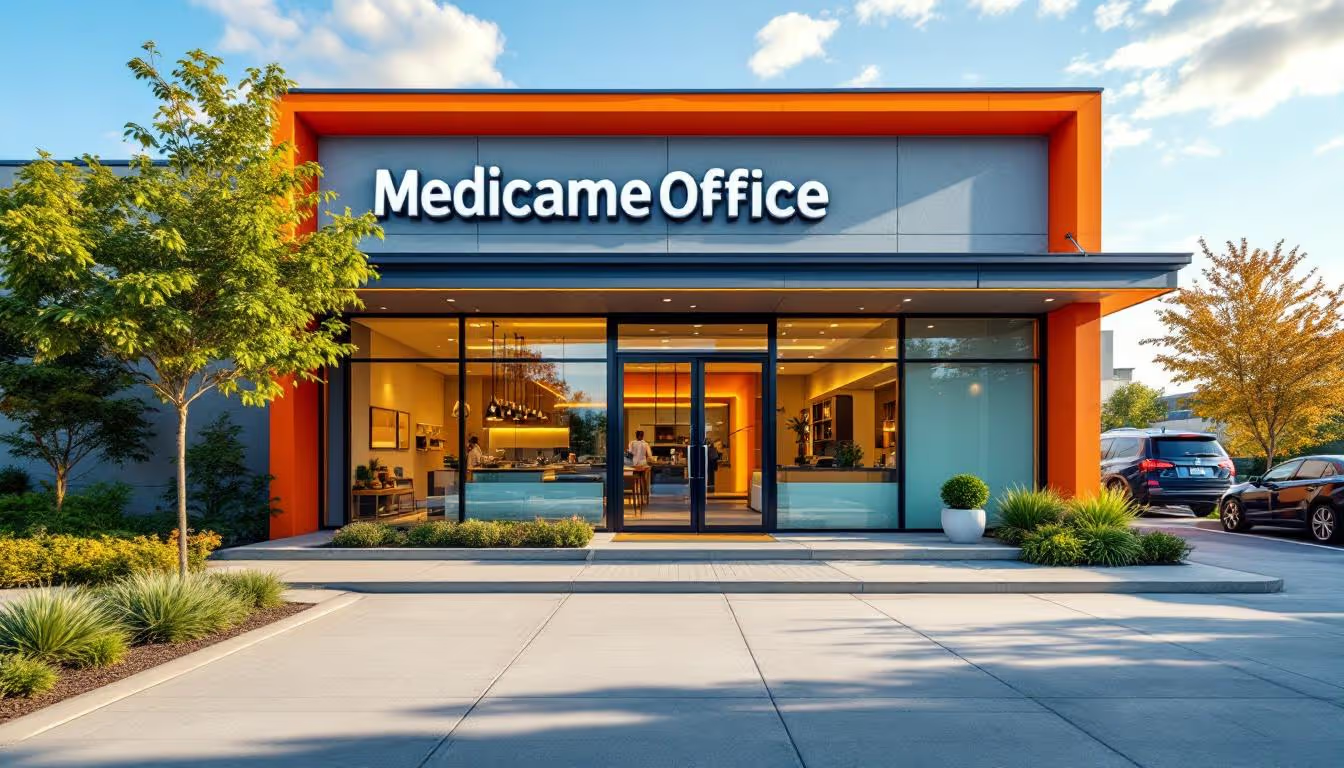Creating SEO-Friendly Service Pages for Doctors
Enhancing Online Visibility for Medical Practices


Creating SEO-Friendly Service Pages for Doctors
Harnessing SEO to Drive Patient Acquisition
In today’s digital age, having a well-optimized online presence is crucial for doctors and medical practices aiming to attract new patients and grow their businesses. Creating SEO-friendly service pages involves a strategic combination of content, technical excellence, and local optimization. This article explores comprehensive strategies and best practices for developing service pages that rank highly in search engines, foster patient trust, and ultimately increase practice visibility.
Understanding the Foundation of SEO for Medical Practice Pages

What are effective strategies for creating SEO-friendly service pages for medical practices?
Designing service pages that rank well in search results is vital for attracting new patients. One of the primary strategies is to incorporate targeted keywords thoughtfully throughout the page. This includes embedding relevant keywords in titles, meta descriptions, headers, and within the content itself.
Healthcare-specific schema markup, or structured data, should also be implemented. This helps search engines understand the content, such as identifying provider information or outlining specific treatments offered. Providing high-quality, accurate, and patient-focused content builds trust and authority, both important factors for search rankings. Regularly updating these pages ensures the information remains current and relevant.
Technical SEO elements like fast loading speed, mobile responsiveness, and a clear site architecture are essential for user experience and crawlability. Ensuring the website is easy for search engines to index using sitemaps and Google Search Console facilitates better visibility.
Local SEO plays a crucial role in medical practice success. Optimizing Google My Business profiles, maintaining consistent NAP (name, address, phone number) across all online platforms, and securing authoritative backlinks improve local search rankings. Monitoring performance through tools like Google Analytics allows practices to gauge success and make strategic improvements.
By combining on-page optimization, technical best practices, local SEO strategies, and regular content updates, medical practices can significantly enhance their online visibility and attract more local patients.
Designing Service Pages with SEO in Mind

What are key elements involved in designing SEO-optimized medical service pages?
Creating effective service pages for medical practices involves a combination of on-page SEO strategies, high-quality content, and user-friendly design. A crucial first step is incorporating relevant keywords that patients are likely to use when searching for specific treatments or services. These keywords should be thoughtfully placed in meta titles, meta descriptions, headers, and throughout the page to signal relevance to search engines.
High-quality, clear, and informative content is essential. The content should directly address common patient questions, explain procedures, and outline benefits to build trust and authority. Using engaging visuals like images and videos not only enhances the user experience but also supports SEO, especially when properly optimized with alt text.
Designing these pages with user experience in mind means ensuring the site is mobile-responsive and easy to navigate. Organized menus, internal links to related services or educational resources, and straightforward calls-to-action (CTAs) guide visitors toward booking appointments or contacting the practice.
Page speed is another critical factor; pages should load quickly to reduce bounce rates and improve rankings. Technical aspects like accessibility standards (such as WCAG compliance), SSL security, and structured data markup help improve site trustworthiness and search engine understanding.
Including testimonials, patient reviews, and quick access to appointment forms can facilitate engagement and conversions. Regularly analyzing performance through tools like Google Analytics allows ongoing refinement and optimization of these pages, ensuring they meet both search engine and patient needs effectively.
Optimizing Content to Attract & Engage Patients

What content optimization tips are effective for medical practice service pages?
Creating well-optimized service pages is essential for attracting new patients and improving search engine rankings. Effective strategies begin with thorough keyword research to identify terms potential patients are searching for, such as specific treatments, conditions, or local area keywords.
Incorporating these keywords naturally into the content is crucial. The descriptions of services should be detailed, evidence-based, and written or reviewed by qualified healthcare professionals, which demonstrates authority and builds patient trust.
On-page SEO elements like optimized title tags, meta descriptions, and URLs help search engines understand the content and improve visibility. Internal linking to related pages and FAQs can enhance user experience and increase time spent on the site.
Structured data markup, such as schema for medical organizations or treatments, can make your listings stand out in search results with rich snippets like star ratings or appointment details.
Trust signals such as patient testimonials, professional credentials, certifications, and links from reputable healthcare sites reinforce the site’s credibility. Ensuring the website is mobile-friendly, loads quickly, and offers an intuitive navigation experience are vital for both SEO performance and patient engagement.
Local SEO practices, including maintaining accurate NAP (name, address, phone number) information across all platforms, optimizing your Google My Business profile, and encouraging satisfied patients to leave reviews, can significantly boost your local visibility.
Overall, combining relevant, authoritative content with technical SEO best practices and local optimization creates a powerful foundation for attracting and engaging prospective patients online.
Technical SEO Essentials for Healthcare Websites

What website structure and design considerations are important for healthcare SEO?
Designing a healthcare website with SEO in mind requires creating a clear, organized structure that facilitates easy navigation for both users and search engines. Use hierarchical menus, breadcrumbs, and dedicated service pages to help visitors find relevant information quickly.
Optimizing technical elements is equally vital. Proper URL structures—short, descriptive, and keyword-rich—improve usability and indexing. Incorporating schema markup designed specifically for medical content, such as Healthcare
Creating an XML sitemap and submitting it to Google ensures all important pages are crawled and indexed efficiently. Site speed is also crucial; fast-loading pages reduce bounce rates and improve rankings. Techniques like image compression, browser caching, and minimizing scripts enhance speed.
Mobile responsiveness is essential, as more patients access healthcare info via smartphones. Responsive design ensures the site adapts smoothly to various device sizes, improving user experience and SEO performance.
Security measures, including HTTPS protocols, are mandatory for protecting patient data and maintaining trust. Regularly updating security certificates and monitoring site vulnerabilities help comply with regulations like HIPAA.
High-quality, authoritative content—like FAQs, reviews, and health updates—is fundamental for relevance and ranking. Incorporating local SEO practices, such as optimized Google Business Profiles, local keywords, and schema markup for location, can attract nearby patients.
Ongoing site maintenance, monitoring performance with tools like Google Search Console, and adapting to evolving SEO standards are necessary for sustained visibility. Ensuring the website is accessible, compliant, and user-friendly establishes credibility and positions your practice favorably in search results.
Leveraging Local SEO for Greater Reach

How can healthcare providers enhance their online visibility and attract more patients through SEO?
Healthcare providers can significantly improve their online presence and draw in more patients by implementing effective local SEO tactics. A fundamental step is claiming and optimizing their Google My Business (GMB) profiles. This includes ensuring all information is accurate, complete, and regularly updated with photos, videos, and posts that highlight services and practice news.
Another essential aspect is using location-specific keywords in website content, meta tags, and service pages. Incorporating terms like city names, neighborhoods, and local landmarks helps search engines associate the practice with its geographic area, making it more likely to appear in local search results.
Creating high-quality, educational content tailored to patient interests can also boost relevance and authority. Blog posts, FAQs, and treatment pages that address common patient questions reinforce expertise and improve search rankings.
Website performance plays a key role—fast load times, mobile responsiveness, and easy navigation are vital for good user experience and better SEO results.
Building a strong online reputation through positive reviews on Google, Facebook, and healthcare directories influences local rankings and builds patient trust. Encouraging satisfied patients to leave reviews—and managing these reviews professionally—can enhance credibility.
Reputation management extends to engaging actively on social media platforms, sharing relevant health information, and establishing a community presence.
Lastly, utilizing structured data markup (schema) enhances how search engines interpret and display practice information, leading to rich snippets that attract more clicks.
Regular content updates, monitoring SEO performance with tools like Google Analytics, and staying current with SEO trends ensure sustained improvements. When consistently applied, these strategies help healthcare providers stand out in local search results, increase visibility, and attract more nearby patients.
Backlink Building & Authority Enhancement
What methods can increase the search engine presence of medical practice websites?
Enhancing a medical practice’s visibility on search engines requires a multi-faceted approach that emphasizes both content quality and technical excellence. Building reputable backlinks is a primary tactic; links from trusted healthcare directories like Healthgrades, Vitals, and other niche review sites serve as vital trust signals for Google. These backlinks not only direct potential patients but also elevate the website’s domain authority, which improves overall search rankings.
Local SEO plays a crucial role, especially since up to 70% of organic search traffic for practices comes from local listings. Ensuring consistent NAP (name, address, phone number) information across all platforms—Google My Business, Facebook, health directories, and citation sites—fortifies local relevance. Claiming and thoroughly optimizing Google Business Profiles with current business info, photos, and reviews can significantly boost local search presence.
Creating valuable, patient-centered content also bolsters SEO efforts. Regularly updating blogs, FAQs, and service pages with relevant keywords tailored to patient search intent helps establish authority and relevance. Using targeted keywords in titles, meta descriptions, and headers allows Google to better understand the content, increasing the likelihood of appearing in relevant search results.
Technical SEO is equally important. Fast website load times, mobile responsiveness, and HTTPS security provide positive user experience signals and are ranking factors. Implementing structured data markup (schema) enables rich snippets in search results, making your listings more attractive and informative.
Finally, actively earning and managing online reviews from satisfied patients enhances credibility and can influence both rankings and patient decisions. A combination of high-quality backlinks, technical optimization, consistent NAP details, optimized local profiles, and engaging content creates a strong foundation for improving search presence.
| Strategy Area | Implementation Tactics | Impact |
|---|---|---|
| Reputable Backlinks | Outreach to healthcare directories, guest posting, sponsorships | Increase domain authority, trust signals |
| Local Listings | Claim and optimize Google My Business, directories | Improve local SEO rankings |
| Consistent NAP | Regular audits ensuring uniform contact info across all platforms | Strengthen local relevance |
| Content Creation | Patient FAQs, blogs, videos, targeted keywords | Establish authority, drive organic traffic |
| Technical SEO | Fast load speed, mobile optimization, schema markup | Enhance site usability and search comprehension |
| Reviews & Reputation | Encourage patient reviews, respond professionally | Build trust and influence rankings |
Investing in these strategies ensures a rising online presence, helping practices attract more local patients and stand out amid competition.
Boosting Search Rankings & Patient Engagement
How can SEO techniques leverage to improve patient engagement and website traffic?
Effective SEO strategies can dramatically increase both patient engagement and website traffic for medical practices. By focusing on relevant local and medical keywords, practices ensure their websites appear prominently when potential patients search for healthcare services in their area.
Creating high-quality, informative content such as blogs, treatment pages, and videos helps answer common patient questions, build trust, and position the practice as an authority in its field. This not only attracts visitors but also encourages them to stay longer and engage more deeply.
Optimizing the website for mobile devices is essential, as most users access healthcare information via smartphones. A fast-loading, mobile-friendly website enhances user experience, reduces bounce rates, and improves search rankings.
Local SEO efforts, including claiming and regularly updating Google My Business profiles, managing online reviews, and encouraging satisfied patients to leave positive feedback, are critical for attracting nearby patients actively searching for healthcare providers.
Backlinks from reputable health sites and positive patient reviews act as trust signals to Google, boosting the practice’s authority and visibility.
Furthermore, utilizing analytics tools helps practice owners monitor performance metrics like traffic, engagement rates, and conversion data. Integrating AI-driven tools, such as review management platforms, streamlines the collection and response to patient reviews, enhancing online reputation.
By combining these tactics—targeted keywords, multimedia content, local listings, reviews, and data insights—medical practices can continuously refine their SEO strategies to attract more patients, improve engagement, and grow their online presence.
Continuous Monitoring & SEO Performance Measurement
How should healthcare practices measure the success of their SEO efforts?
Assessing the effectiveness of SEO strategies in healthcare practices requires a comprehensive approach using various analytics tools. Google Analytics and Google Search Console are fundamental for tracking essential metrics such as organic traffic volume, bounce rates, and user engagement on the website. These insights reveal how well the website attracts and retains visitors interested in medical services.
Conversion tracking — for example, appointment requests, phone calls, or form submissions — provides direct indicators of how SEO efforts translate into patient inquiries. Monitoring keyword rankings, especially for local search terms, helps evaluate visibility in target markets.
Benchmarking performance against local competitors through tools like SEMrush or Ahrefs can identify strengths and weaknesses in the practice’s online presence. Reviews and patient feedback, gathered via platforms like Google My Business or health review sites, also influence SEO and help tailor content to patient needs.
Ongoing analysis allows practices to adapt their strategies effectively. Adjustments might include refining content, optimizing technical SEO, or modifying local SEO methods based on what the data shows. The ultimate goal is to focus on metrics that impact appointment bookings and practice growth, ensuring that SEO efforts are meaningful and aligned with business objectives.
Regularly reviewing these performance indicators enables a healthcare practice to stay ahead in search rankings and maintain a strong online presence that attracts new patients and retains existing ones.
Implementing a Continuous SEO Strategy for Sustained Growth
Effective SEO for medical practices is an ongoing process that requires regular evaluation, adaptation, and enhancement of strategies. By integrating comprehensive on-page and technical optimizations with local SEO practices, engaging content creation, and authoritative backlink building, practices can improve their search engine ranking, online visibility, and patient trust. Leveraging analytics tools for performance measurement and staying updated on evolving SEO trends enables practices to maintain a competitive edge. Ultimately, a well-executed, sustainable SEO strategy not only attracts more patients but also establishes a strong and credible online presence that supports long-term growth and success.
References
- SEO for Doctors 2025 - 10 Tips SEO for Medical Practices
- SEO for Doctors: The Complete Guide - RUNNER Agency
- How to Create an SEO-Friendly Doctor Website: A Step-by-Step Guide
- SEO for Doctors: Get More Patients with Smarter Search - WebFX
- SEO for Doctors: Your Guide to Dominating Local Search in 2025
- SEO for Doctors: How to Rank Your Medical Practice on Google
- SEO for healthcare: how to boost your medical practice's organic traffic







